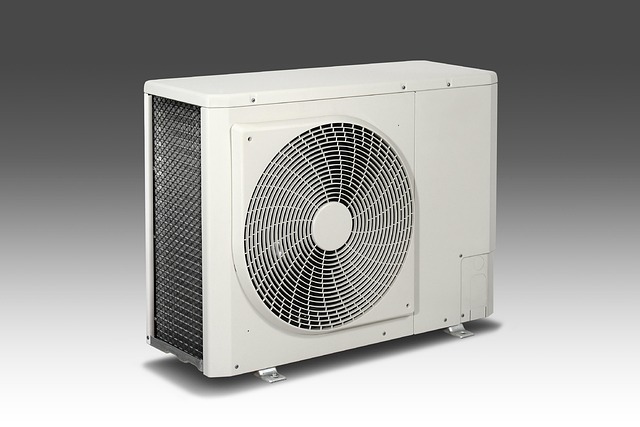The Evolution of Air Conditioning Technology: Smart Solutions for Modern Buildings
Air conditioning technology has evolved dramatically from its humble beginnings to sophisticated climate control systems that now incorporate smart features, energy efficiency, and sustainability. Modern air conditioning is no longer just about cooling spaces but creating optimal indoor environments while minimizing environmental impact. Today's systems serve diverse needs from residential comfort to critical commercial applications, integrating with building management systems and renewable energy sources to deliver performance while addressing growing concerns about energy consumption and environmental sustainability.

Smart Air Conditioner Marketing: The Technological Revolution
Smart air conditioners represent the newest frontier in HVAC technology, offering unprecedented control, efficiency, and convenience. These systems connect to Wi-Fi networks, allowing users to control temperatures remotely via smartphone applications. The marketing of these advanced systems focuses on their ability to learn user preferences and adjust settings automatically based on occupancy patterns, weather forecasts, and even time of day.
Modern smart air conditioning marketing emphasizes features like geofencing, which triggers the system to turn on or off when users enter or leave a predefined area. Voice assistant compatibility with platforms like Amazon Alexa, Google Assistant, and Apple HomeKit has become a standard selling point. Manufacturers are increasingly highlighting the potential energy savings of 15-30% that comes with intelligent temperature management, appealing to both cost-conscious consumers and those concerned about environmental impact.
HVAC Renewable Energy Systems: Sustainable Cooling Solutions
The integration of renewable energy sources with HVAC systems represents a significant advancement in sustainable building technology. Solar-powered air conditioning systems have gained traction as solar panel efficiency improves and costs decrease. These systems use photovoltaic panels to generate electricity that powers air conditioning units, reducing dependency on grid electricity and lowering operational costs.
Geothermal heat pump systems have emerged as another renewable energy solution for climate control. By leveraging the consistent underground temperatures, these systems can provide both heating and cooling with minimal electricity consumption. Although installation costs remain higher than conventional systems, the long-term energy savings and reduced carbon footprint make them increasingly attractive options for new constructions and renovations.
Biomass-powered absorption chillers represent another innovative approach, using heat generated from renewable organic materials to drive the cooling cycle instead of electricity. Wind-powered HVAC systems are also being developed for regions with consistent wind patterns, further expanding the renewable energy options for climate control technologies.
Air Conditioning and Heating HVAC: Integrated Comfort Systems
Modern HVAC systems have evolved to provide seamless transitions between heating and cooling functions, offering year-round comfort through integrated solutions. Variable refrigerant flow (VRF) systems represent one of the most significant advancements in this area, allowing simultaneous heating and cooling in different zones of a building while recovering heat from cooling operations to use in areas requiring warmth.
Ductless mini-split systems have gained popularity for their flexibility and efficiency in providing zoned comfort without extensive ductwork. These systems feature outdoor compressor units connected to multiple indoor air handlers, allowing independent temperature control in different rooms or zones.
Heat pumps have also seen technological improvements, now operating efficiently even in extreme temperatures. Advanced heat pumps can extract heat from outdoor air even when temperatures drop well below freezing, making them viable alternatives to traditional furnaces in many climates while providing cooling capabilities during warmer months.
Climate Control Systems for Office: Productivity and Comfort
Office climate control has evolved beyond basic comfort to address productivity, well-being, and sustainability concerns. Modern office climate systems incorporate sophisticated zoning capabilities that allow for personalized comfort in different areas based on occupancy patterns and workspace functions. These systems recognize that temperature preferences vary among individuals and that different areas of an office may have different thermal requirements based on equipment heat loads, occupancy density, and functional needs.
Demand-controlled ventilation systems adjust fresh air intake based on occupancy levels detected through CO2 sensors, ensuring optimal air quality while minimizing energy waste. Displacement ventilation systems deliver conditioned air at floor level, allowing it to rise naturally as it warms, creating more efficient air distribution patterns than traditional overhead systems.
Advanced building management systems now integrate HVAC controls with lighting, security, and other building functions, allowing for comprehensive environmental management. These systems collect data on performance, occupancy patterns, and energy use, enabling continuous optimization through machine learning algorithms that anticipate needs and adjust operations proactively.
Commercial HVAC Equipment: Industrial-Scale Solutions
Commercial HVAC equipment has seen significant advancements to meet the demands of large-scale applications while improving efficiency and reducing environmental impact. Modular commercial systems have become increasingly popular, allowing facilities to scale cooling and heating capacity based on changing needs while providing redundancy that ensures continuous operation even if individual units require maintenance.
Water-cooled chillers remain the backbone of large commercial cooling systems but have seen efficiency improvements through innovations like magnetic bearing compressors that eliminate friction losses and reduce maintenance requirements. These systems now achieve much higher Coefficient of Performance (COP) ratings than previous generations.
The commercial HVAC market has also embraced heat recovery systems that capture waste heat from cooling processes and repurpose it for water heating or other applications within the building. This approach significantly improves overall system efficiency and reduces energy costs for facilities with simultaneous heating and cooling needs.
Real-world commercial HVAC solutions vary significantly based on building size, function, climate, and budget considerations. Below is a comparison of common commercial HVAC options:
| System Type | Typical Applications | Initial Cost Range | Energy Efficiency | Maintenance Requirements |
|---|---|---|---|---|
| Rooftop Packaged Units | Retail, Small Offices | $5,000-$20,000 per unit | Moderate | Moderate |
| Water-Cooled Chillers | Large Buildings, Campuses | $75,000-$300,000+ | High | High |
| VRF/VRV Systems | Mid-size Offices, Hotels | $20,000-$70,000 | Very High | Moderate |
| Geothermal Systems | Long-term Investments | $20,000-$80,000+ | Excellent | Low |
| Evaporative Cooling | Dry Climates | $3,000-$12,000 | High in suitable climates | Moderate |
Prices, rates, or cost estimates mentioned in this article are based on the latest available information but may change over time. Independent research is advised before making financial decisions.
The future of air conditioning technology continues to evolve with a focus on improved efficiency, reduced environmental impact, and enhanced user experience. As buildings become smarter and more connected, climate control systems will increasingly function as integral components of comprehensive building management ecosystems, balancing comfort, cost, and sustainability in ways that were unimaginable just a few decades ago.




